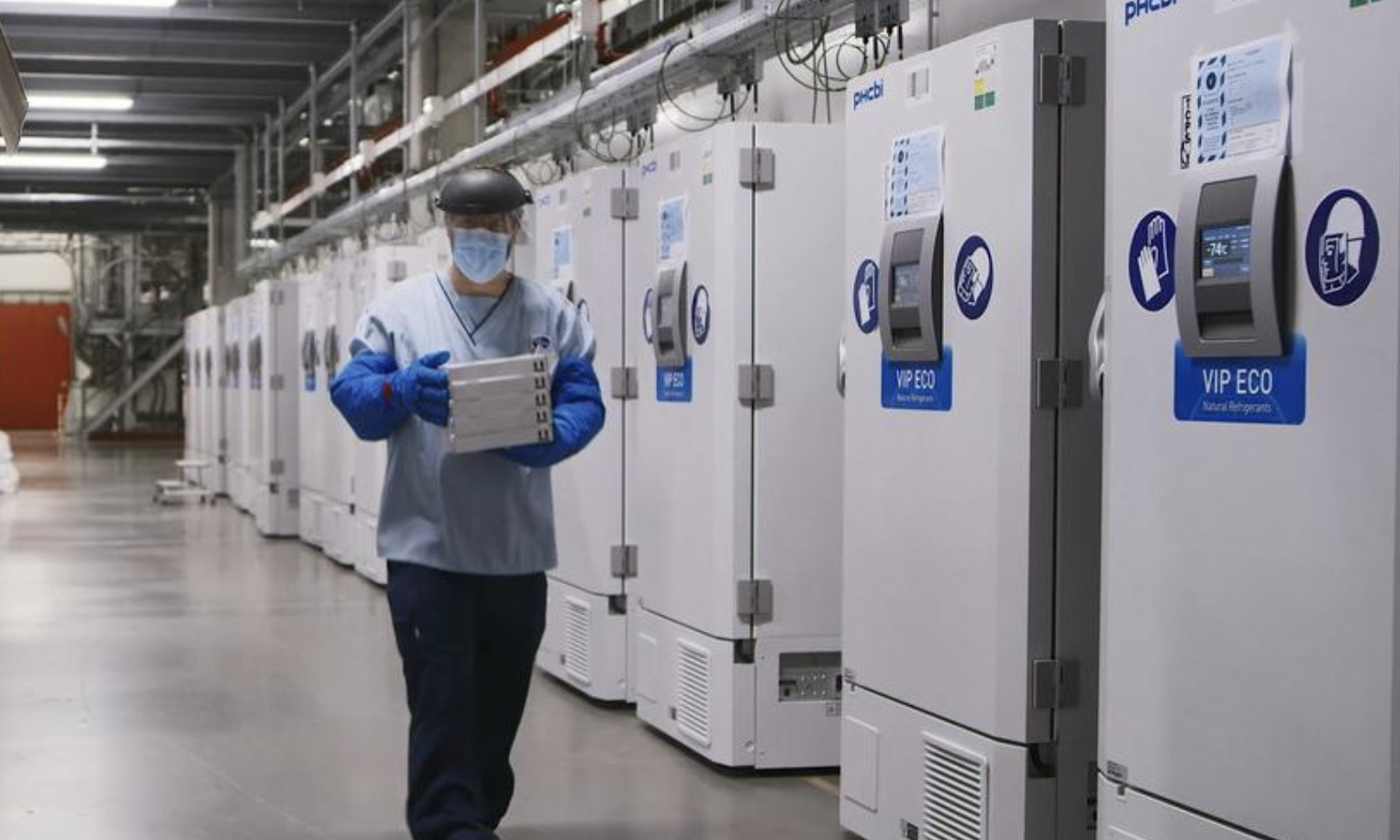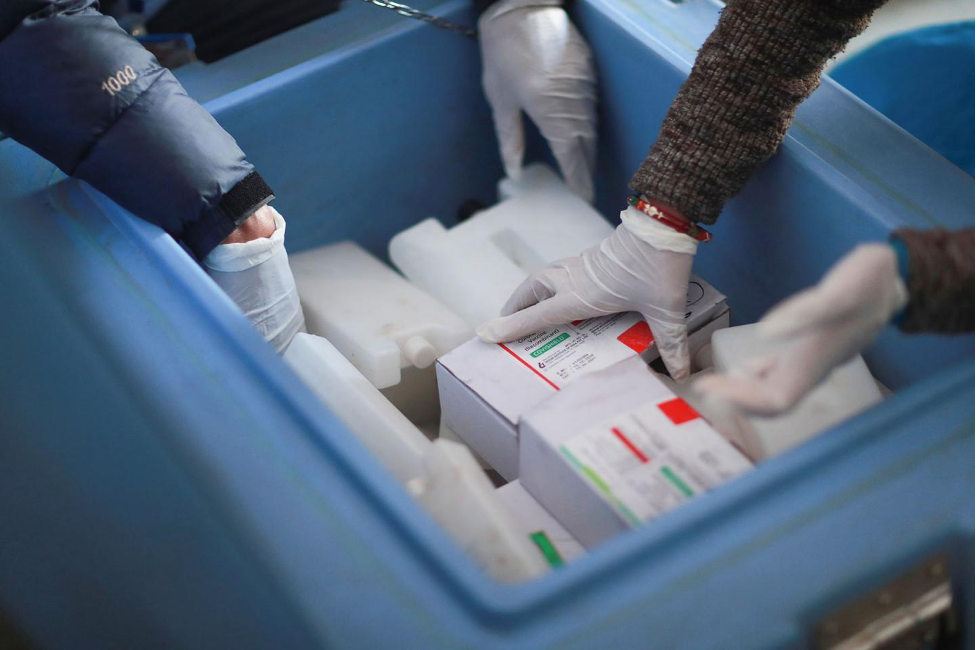
Cold chain operation is a management process for products requiring refrigerated temperatures that customers demand, including fresh flower arrangements, poultry, and even prescription drugs. Operators in cold chain handle bulk orders per day. These workers in cold and condensation environments count on the cold-rated device to work. Yet, a traditional rugged mobile computer can’t deliver such promise.
To cope with cold and condensation-producing environments, specialized cold chain handheld computers are being introduced.

Table of Contents
Cold Chain System Challenges
The cold storage computer technology, though intriguing, still falters in several ways that hinder the progress and adoption of efficient cold chain systems:
1. Inaccurate Cold Storage Handling
Incorrect storage handling can cause problems in maintaining proper stocks level. To fulfill more orders per day, this, in turn, leads to picking problems when operators rely on inaccurate information to work. Threads exit in the cold chain when cold and moisture attach to the devices, which makes it difficult to upload the information in real-time and mistakes are easily made if the information is updated manually. Apart from this, the barcodes placed on higher shelves make reading and scanning difficult, which further lowers productivity, increases expense, and correspondingly, loses revenue.
2. Inefficient Processes
In low temperature environments, the behavior of electronic components changes. For example, during working in the temperature that is done to 0℃, the traditional mobile computer is not performing as well and discharging faster, which causes the problem in the daily operation of the cold chain.
If cold chain workers rely on paper vouchers to work, the order picking, inventory, and quality control become inefficient and inaccurate, which not only increases the labor cost but creates a safety risk of product delivery.
3. Erratic Throughput
Due to the external forces, fluctuations in demand are posing challenges for cold chain management. Cold chain system failure might occur when the storage and transit engaged daily are done in a hurry to fulfill the heavy orders.
Requirements of Cold Chain Operation Nowadays
The cold chain is improving global food safety. And modern companies benefit significantly from specialized mobility technologies that can operate in extreme temperatures. Some of those benefits include:
1. Streamline Cold Storage Handling
To handle more orders per day, cold chain PDA comes into play. It provides real-time, accurate information about stock levels and composition. The technology employed in managing cold chain inventory is critical to success because the value of the intelligent PDA system is just as good as the quality of the cold chain system itself.
2. Increase Accuracy and Productivity
Managing seasonality throughput requires timely and accurate data. It is necessary for the cold chain to use timely and accurate data to plan and forecast demand to respond to the challenges more effectively.
3. Reduced Costs
To meet the requirement of an efficient cold chain system, adjusted shifts should be considered. For example, adopting the right mobility technologies helps cold chain operators hone the skills necessary to adapt to fluctuations in logistics quickly.
UROVO to Address the Challenges
Since the cold chain is directly related to food and medical products, strict requirements are needed to operate a cold chain. UROVO incorporates several technologies to produce the best-specialized device used in the cold chain to streamline the preparation, storage, and transportation tasks. See what is a qualified PDA has to offer:
1. Mobile Computer
There are multiple goods present in cold storage. And since it is impossible for the human brain to memorize the location of each product, a handheld mobile computer is preferred in this instance. UROVO’s RT40 cold chain handheld computer is equipped with Octa-core CPUs and a stupor stable Wi-Fi connection that makes the process of data recording and recalling efficient as ever.
2. Scan Engine
A cold chain handheld computer uses scan engine to streamline the data recording process by scanning the product labels and saving all the relevant details, including product type and location. UROVO’s RT40 is a super-strength cold chain handheld computer with a professional scan engine that supports 1D/2D barcode and screen barcode scan to help deal with complex and long-range scanning.
3. Cold Resistance Battery
Endurance presents a challenge itself in a low-temperature environment. The advanced battery technology integrated into UROVO’s RT40 mobile computer allows for batteries to operate in the low-temperatures for maximum runtime capacity without the cold accelerating battery discharge.
4. Hot-Swap Battery
Charging downtime is a past thing thanks to the UROVO’s RT40 mobile computer – the UROVO RT40 supports hot-swap to ensure that battery can be replaced immediately without power-off, so the loss of important information can be prevented with no hassle.
5. Real-time Connectors
Mobility technologies with internet connection functions require a long-life battery and stable signal. The RT40 by UROVO has built-in Wi-Fi and WWAN connectors that keep devices online in real-time, so to ensure real-time data intercommunication.
Conclusion
UROVO, the world’s leading industrial chain of mobile applications, gives professional solutions to more than 100 countries and regions. With the efforts of 1200 skilled employers, UROVO provides cost-effective solutions and services for customers in logistics, retail, health care, transportation, and other industries. To learn more about UROVO’s products and services, click here https://en.urovo.com/.